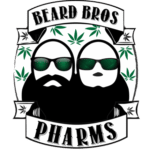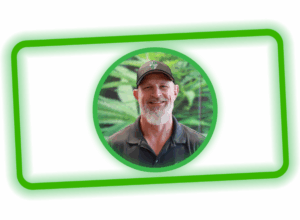 Right around the implementation of lockdowns and mandates in the middle of 2020, I began microdosing psilocybin mushrooms on a regular, but unscheduled, basis.
Right around the implementation of lockdowns and mandates in the middle of 2020, I began microdosing psilocybin mushrooms on a regular, but unscheduled, basis.
I would grind up several grams and use that material to fill empty gel caps with anywhere from 0.1 grams to 0.3 grams, then eat them like jelly beans anytime the urge crossed my mind.
Teetering on the edge of depression from the state of the world at the time, this haphazard new routine pulled me back from the brink many times. As a creative type who weaves words for a living, the mushies became my muse and the flow state became my stomping grounds.
Having smoked cannabis daily for the 24 years leading up to that point, dreaming was rare for me and I was just fine with that. In fact, a big reason why I consume cannabis is to turn the brain off at night and rest.
About a month into my microdosing experience, that changed, and until very recently not a night went by where I wasn’t embroiled in some vividly fabricated mindfuck. It got to the point where my dreams were recurring and more than lucid, where I was making conscious decisions while unconscious.

Feeling less rested than ever, I decided to set the psilocybin aside for a while and, sure enough, I have gratefully returned to zombie mode while sleeping.
Since my mushroom microdosing was delivering some quality of life improvements, I was curious to learn more about any potential connection between dreaming and shrooming. I realize that my limited experience is not lab-grade science, but I was able to find reams of such research regarding the science behind dreaming, and as we all know, research into psilocybin is at an all-time high. Here’s what I learned.
THE CONNECTION BETWEEN DREAMING & PSYCHEDELIC MUSHROOMS
Although the concept of dreaming is universally shared between us all, the research surrounding dreams offers unique insights into human consciousness. Of the five stages of sleep – Levels 1-4 and REM or Rapid Eye Movement – dreams typically occur during the REM stage, which generally kicks in around an hour and a half after a person falls asleep.
When test subjects are suddenly awoken from the REM stage of sleep, many report hallucinatory experiences that often follow a narrative and include lifelike sensory and motor function use.
This is very reminiscent of my own experience where I had invented an entire city out of thin air, returning there every night in my sleep. I was eventually deciding which streets to take as shortcuts to my mental destination across “town”. I could touch, feel, and smell the people I would interact with, even though they only existed in my mind.
Compare that, and the description of REM sleep above, to the typical hazy, blurry, just out of reach and instantly-forgotten memory of most dreams.
Seeking that connection between dreaming and psilocybin, I learned that when a person ingests psilocybin, as I was in those gel caps, the acidic environment in our body converts that into psilocin.
Psilocin emulates serotonin, a neurotransmitter produced by the human body, and even attaches to serotonin receptors, tricking the body into flooding itself with even more of the all-natural mood modulator.
Research has shown that psilocybin (and, in turn, psilocin) most heavily affects the region of the brain known as the Default Modes Network, or the DMN, which consists of the medial temporal lobe, medial prefrontal cortex, posterior cingulate cortex, and portions of the parietal cortex.
The DMN is responsible for the synthesis of sensory information and is actively engaged during self-reflection and during the processing of complex mental imagery. Trippy, right?
In a woken state, the default mode network allows us to perceive images around us in our own unique way and gives us our sense of “self”.
Patients who have naturally increased areas of the DMN have been found to harbor a strict theory of mind and sense of self. If administered correctly, psilocybin could reduce the frequency of functionality in these regions of the brain, potentially giving those patients a new, more positive outlook on life.
This is why leading researchers are beginning to view psilocybin as a low-risk, high-reward tool to put test subjects into a “waking dream state”, opening countless possibilities for deeper study into brain functionality and treatment of common mental ailments like anxiety and depression.
Though this sort of research utilizing psilocybin is relatively new, we have decades of studies on REM sleep and the connection between depression and REM sleep dysregulation.
Based on my research, it looks like psilocybin produces similar physiological and neurobiological similarities in the brain as does dreaming during REM sleep.
So, it makes sense that my daily consumption of psychedelic mushrooms was likely contributing to my ever-intensifying dreams. It also makes sense why we are seeing headlines popping up every week in mainstream media outlets pondering if the answer to anxiety, depression, PTSD, and more might be locked inside a trippy little shroom.
CLICK OR TAP HERE
TO TRIP OUT ON MORE
BEARD BROS COVERAGE
OF THE PSYCHEDELIC MOVEMENT
















